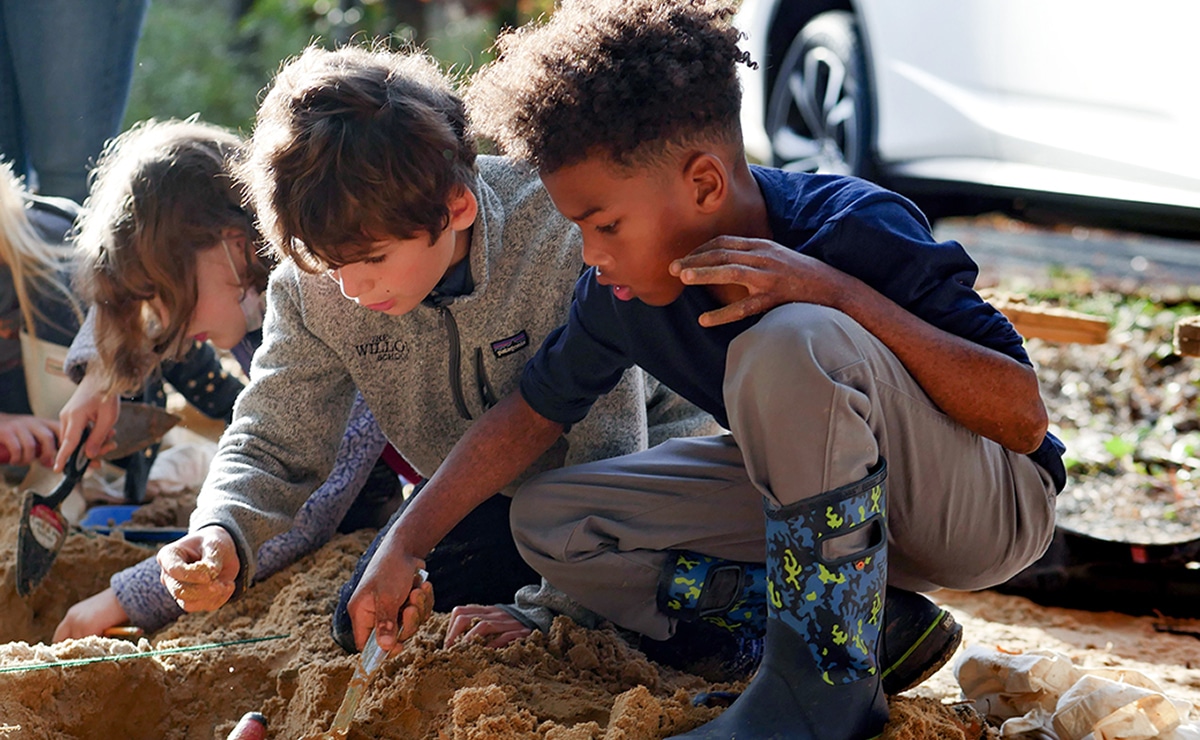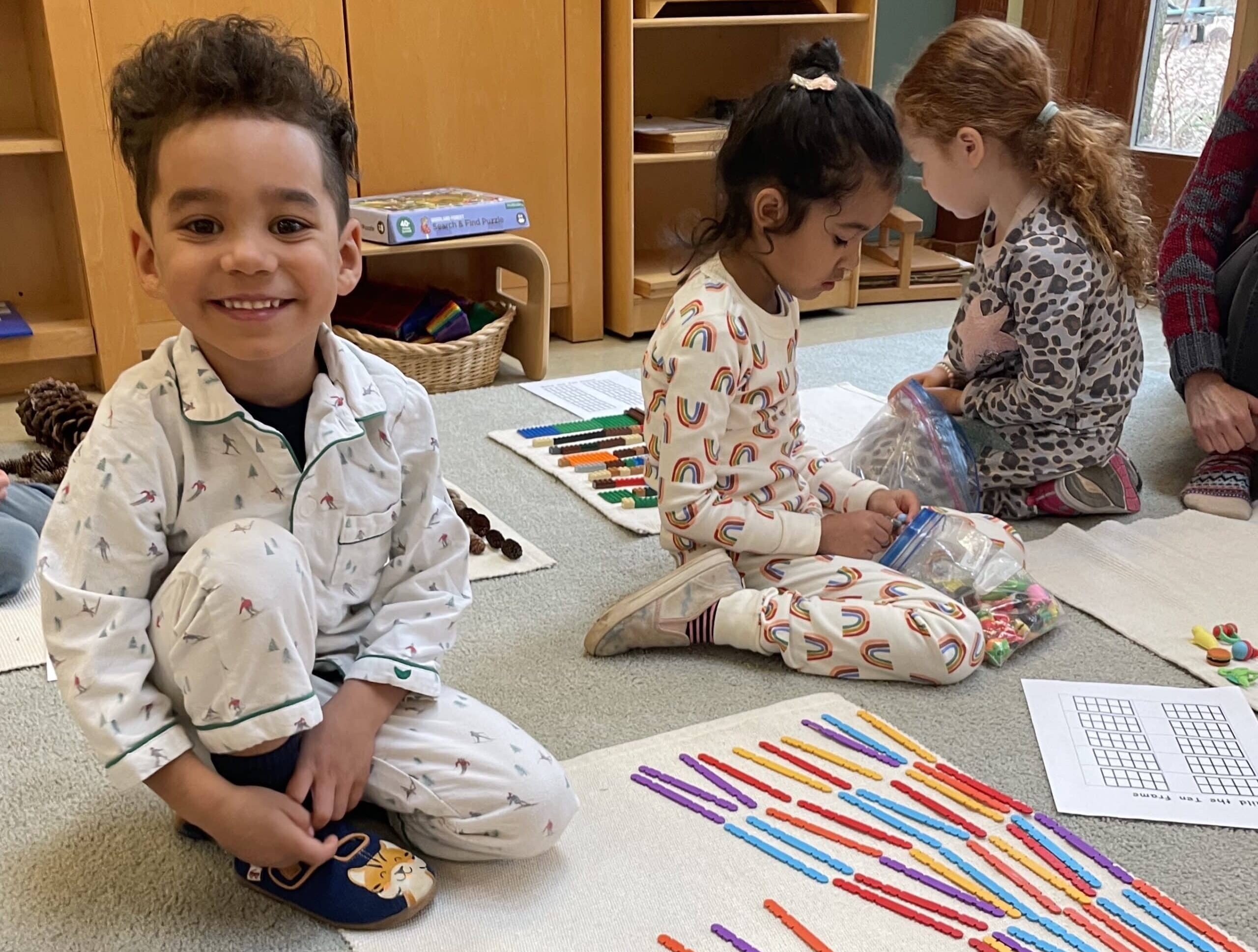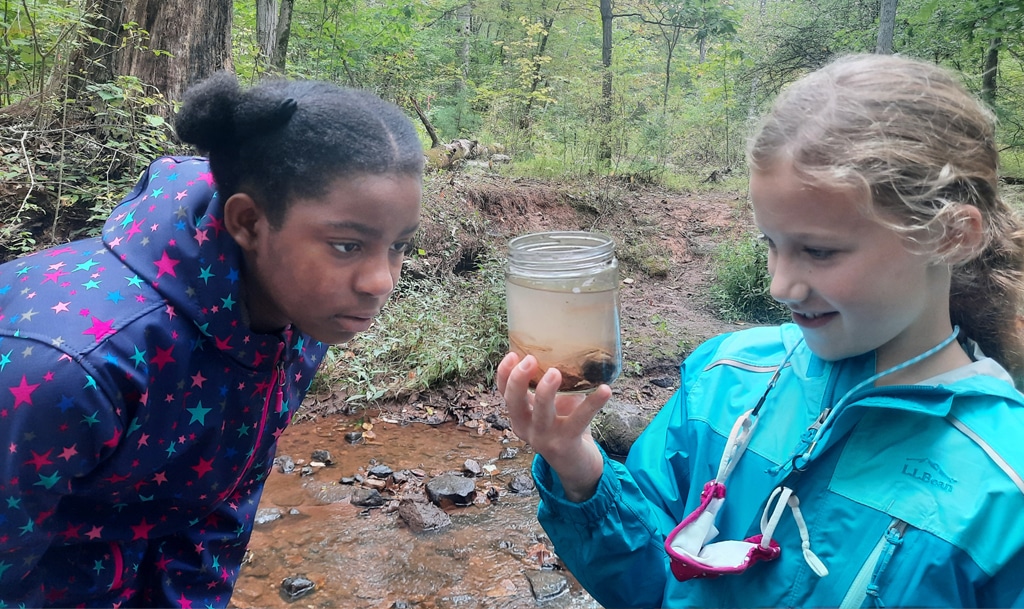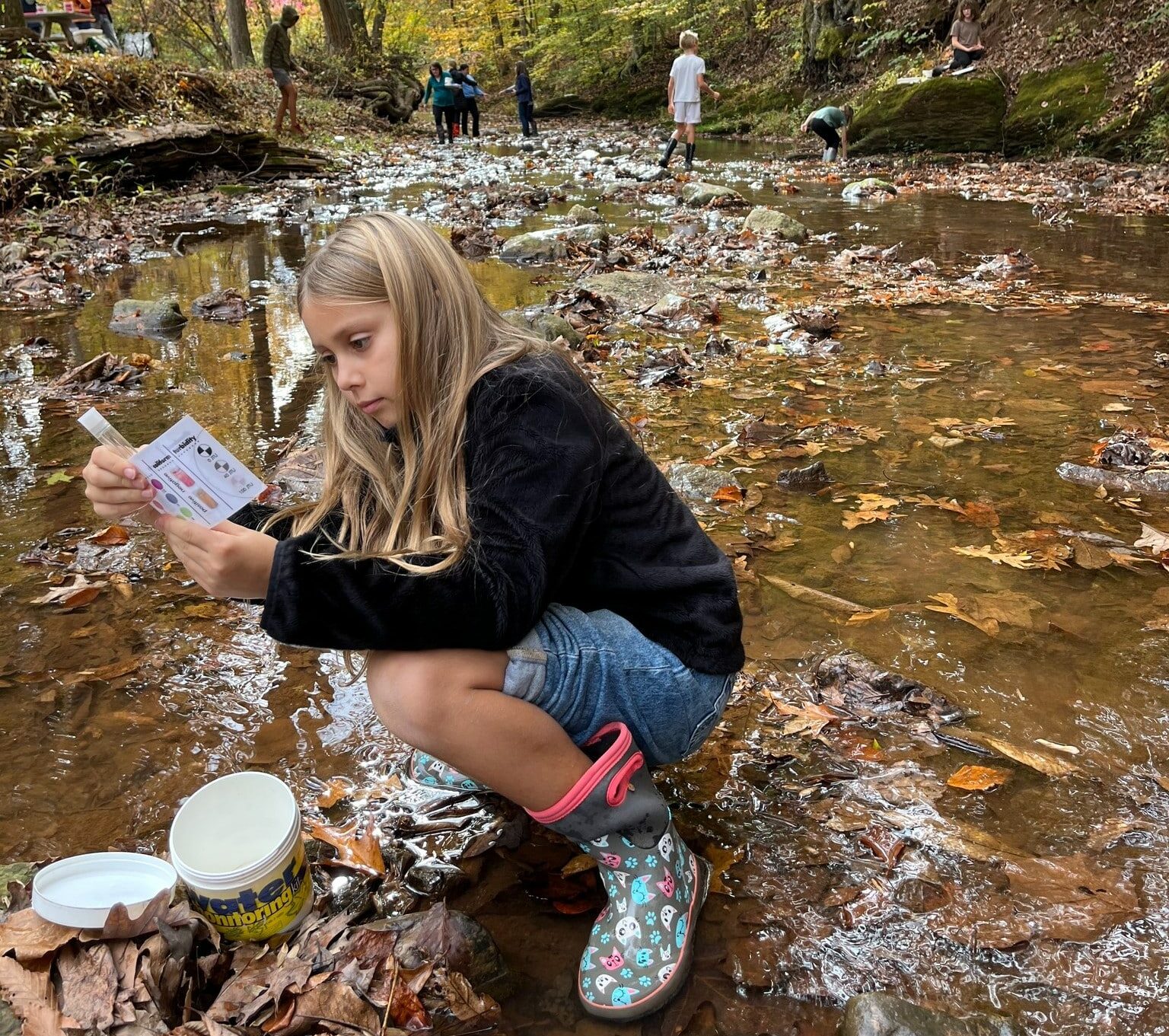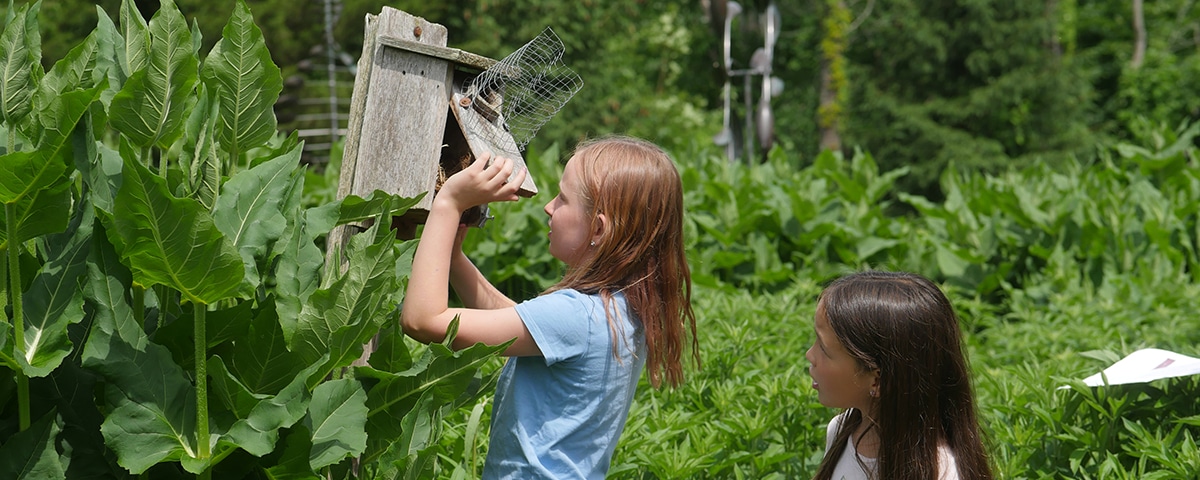
Lower School
Kindergarten – Grade 5:
Willow’s lower school classrooms are filled with lively discussions and laughter—a telltale sign that students are engaged and excited about learning. We use a student-centered learning philosophy, which allows students to feel empowered by what and how they learn. On any given day, you will find lower school students cooperatively building models to test out a new idea, learning songs and dances from around the world, independently reading or researching a topic of interest, and exploring our beautiful campus as young scientists and naturalists.
Within our nurturing and supportive environment, your child will learn how to think deeply about and understand complex issues. Your child will learn to embrace virtues like respect, responsibility, compassion, and gratitude. Skilled teachers channel every child’s natural eagerness to learn, encouraging their curiosity to explore their world, think critically, and develop solutions to grade-appropriate, authentic queries. In small classes, Willow students cultivate trusting relationships with teachers and thrive within a curriculum offering the perfect balance between the structure and freedom necessary to explore new ideas.
Core subjects like social studies, science, reading, writing, and math are layered into real-world problem-solving projects that encourage children to master the basics while expanding critical thinking skills. Group projects help students learn from each other and understand different perspectives, while our student-centered model allows children to exercise choice, work independently under the guidance of expert teachers, and develop executive functioning skills.
Explore more about our program
Project-Based Learning
At Willow, we believe that learning should be an authentic, memorable experience. At the heart of our classrooms is an understanding that collaboration on meaningful projects is key to developing critical thinking, problem solving, and communication skills. By learning to apply academic skills like math, reading, and writing to real problems, seeing an issue from multiple perspectives, and identifying solutions with an understanding of consequences, Willow students are not just learning to achieve a grade or finish a unit. They are developing the skills they need to become empowered, lifelong learners who can affect positive change.
Problem-Solving in Math
Math comes alive at Willow. Students explore how important math is in our world through hands-on learning that focuses on problem solving and is relevant, approachable and fun. Willow teachers use a Concrete-Pictorial-Abstract approach, complemented by Montessori-style math manipulatives, play- and project-based learning, and the Singapore Math Dimensions program, to nurture a positive attitude towards math and build problem-solving skills. Students apply what they learn to real-life scenarios, whether that’s using counting by groups of ten to deduce the number of acorns eaten in their outdoor classroom, counting change at a classroom market, or tackling STEAM challenges!
Science Program
At Willow, students don’t just learn in nature, they learn from nature. Using Willow’s 34-acre natural campus (with its forest, pond, stream, and more) as a guide, students observe and experience natural systems, growing to understand humankind’s part in it. Kindergarteners hone their observational skills by adopting “teacher trees,” keeping nature journals and creating their own hypotheses about why they change throughout the year to learn about seasons, the water cycle, and more. Fifth graders travel down the Willow stream to better understand our local watershed, explore erosion, and understand the impact of pollution.
Take a Deeper Dive into our Curriculum
Dummy to Close First Accordion
Kindergarteners are...
Highly curious; they are eager to learn about the world and how it works. They are able to focus on tasks for longer periods of time than in preschool and are capable of more complex thinking. Kindergarteners are also able to follow routines and rules more easily, though they may be critical of peers who don’t. Seeing other’s perspectives and problem solving are an important part of helping kindergarteners grow.
Willow’s curriculum harnesses kindergarteners’ curiosity and eagerness to make sense of the world. Here are some examples:
- In science, kindergarteners conduct hands-on investigations of interdependency (trees, birds, anatomy, ponds), turning Willow’s 34-acre campus into learning laboratory as they developing the knowledge and skills that lead to scientific literacy.
- In math, Singapore Math and Montessori math materials are used to introduce abstract mathematical concepts in concrete terms. Addition and subtraction, for instance, are made real to kindergarteners because they act out, model, and solve story problems.
- In social studies, kindergarteners consider the essential question, “Who am I?” They examine themselves in the context of their classroom, school, family, and the world, learning to appreciate the importance of cooperation and support.
- Engaged with art and music on a regular basis, kindergarteners develop an appreciation for the arts as they learn to listen, express themselves, and work together.
By the end of the year, these are just a few of the many skills and abilities Willow kindergarteners demonstrate:
- An ability to organize their thoughts and ideas to tell stories verbally or pictorially, learned through daily workshop writing and by engaging with art and literature.
- An ability to use their “toolkit” of letters, sounds, and decoding strategies to make sense of what their teachers are reading and become more independent readers.
- An ability to examine patterns in math, make predictions about what comes next, and explain and interpret data representations.
- An understanding of interdependency in the natural world and how we all depend on each other.
- An understanding of themselves and what it means to be a productive member of a community.
Need guidance on transitioning your child to kindergarten? Request our Kindergarten Planner. We will email it to you immediately!
First Graders are...
Highly motivated to learn, but also in need of more structure and routine. They are eager to soak up information, and most first graders start looking for logical answers to their questions about the world. They are ready to explore in more detail what community means and how they fit in. First graders are also ready to understand what letters and numbers really mean.
Taking advantage of first graders’ readiness to participate as a group and thirst for new information, The Willow School curriculum leads students to:
- Delve more deeply into the concept of community. In social studies, first graders learn about their classroom, school, town, and global communities. This focus on how groups interact is complemented in science with the study of nature and ecology, especially when first graders adopt and care for monarch butterflies and study their ecosystem.
- Learn word patterns through engaging, multi-sensory explorations. These lessons support their reading and writing development.
- Begin to participate in writers’ workshops in language arts. Students also learn Willow School Editing Marks and continue to use Montessori Grammar Symbols and learn about nouns and verbs.
- Learn how to solve math problems in both abstract and concrete ways through hands-on activities and discussions taught using Singapore math, Pearson’s Investigations, and Montessori math techniques. Students apply their knowledge in engaging games to help them understand mathematical concepts in depth. RocketMath, a worksheet-based program, introduces addition, subtraction, multiplication, and division.
- Participate in Willow’s Winter and Spring Arts Evenings through art, music, and handcrafts, placing their own creativity in the context of the school community.
By the end of first grade, young Willow students demonstrate these and many other skills:
- An increased ability to work with others and follow directions; the ability to verbalize their needs and wants in social groups.
- Age-appropriate writing skills, supported by increased focus and hand-eye coordination.
- Basic number sense, including counting one to 10 and beyond, measuring, estimation, sorting and patterns.
- An interest in nature and being comfortable and curious in the out-of-doors.
Second Graders are...
Starting to understand more complicated ideas, such as cause and effect. At The Willow School, a series of themes and experiences integrates Grade 2 students’ learning across all of the core subjects. Students apply their developing understanding of letters and numbers to more complex material and begin to develop their analytical abilities. They become adept at writing complete sentences and using basic punctuation. Second graders become more aware of what other people think about them. They begin to understand the importance of rules and their own role in helping people.
Grade 2 students are given the opportunity to use their increased understanding of more complicated ideas through experiential learning at Willow in the following ways:
- In science, students study insect life cycles through a larvae experiment. They explore the campus, discovering the school’s unique water system and exploring how it mimics the natural water cycle. They also conduct a study of the Willow pond, analyzing population data and comparing results to previous years’ studies to identify patterns. There are field trips to the Great Swamp Environmental Center and Poricy Park fossil beds. Second graders work with kindergarteners and seventh graders to identify maple trees, tap and monitor them, and turn the sap into maple syrup.
- In social studies, students learn about the past and why it’s important to them. They start off the year learning about their family’s past by conducting interviews, collecting a family artifact, and creating a family tree. They reconstruct the past of the land occupied by The Willow School by interpreting artifacts and piecing together primary documents. They also learn to reconstruct history through an on-site archaeological dig, a project that engages students in the work of an archaeologist: excavation, research, and interpreting their findings.
- In language arts, children write poetry, autobiographies, and fictional diaries, integrating what they learn in the other disciplines. They learn to write for different purposes by mimicking the styles of famous authors, as well as specific genres.
- Math is integrated into the hands-on projects second graders are engaged in, from creating a timeline to identify years in the past to collecting and graphing pond study data, recording temperatures in the maple sap project, and more.
- Oral French and Spanish studies continue, and simple written exercises are added. Children play games, read books, work on group and individual projects, and participate in a play. Students choose their primary world language at this age.
By the end of the year, Willow second graders demonstrate proficiency in:
- Solving math word problems.
- Reading comprehension, as students are asked to recall incidents, characters, facts, and details of stories and discuss similarities and differences between stories.
- Analyzing the past and how it relates to the present through primary and secondary sources, maps, and cultural studies, such as the history of African-American music.
- Speaking in complete sentences in French and Spanish, while fully understanding what they read and say.
- Making predictions and finding patterns in the natural world.
Third Graders are...
Becoming more independent learners. They learn best through active, concrete experiences, and are able to work independently. Third graders are beginning to see the written word as a source of information. Their energy seems boundless, but it can also be their greatest challenge, as their attention span may not match their enthusiasm for taking on new tasks. Friendships become extremely important at this age, as children long to be part of a group.
In Grade 3 at Willow, students’ energy and enthusiasm is challenged with such curriculum items as:
- Hands-on science experiences include leading the school-wide Lunch Waste Challenge and building a model of our solar system after a trip to the planetarium.
- Math instruction is based on the Singapore Math Curriculum, with supplemental material for differentiated learning.
- Language arts integrates lessons that help students develop powerful story lines, while developing vocabulary, grammar, and conventions. Independent reading and read alouds are integral to third grade language arts.
- In their study of Colonial America and Westward Expansion, students build models, design games, learn period songs and dances, and participate in other student-led experiences that bring their social studies learning to life.
By the end of the year, these are just a few of the many skills and abilities Willow third graders demonstrate:
- Ability to do research in the library or on the computer.
- Familiarity with the writing process: drafting, editing, revising, publishing.
- Ability to self-assess as they learn to polish and praise artwork.
- Independent reading and book selection.
- A growing awareness of “place,” the complexity of communities and systems of which the student is part.
- An understanding of the responsibility of each person to care for these communities and systems.
Fourth Graders are...
Becoming increasingly self-aware. At this grade, students are more self-motivated and able to work independently. At the same time, they are better able to work in groups and understand the perspectives of others. They can’t sit still for long, but they tire easily. Recess and snacks are still important.
In Grade 4 at Willow:
- Math in Focus, a Singapore Math–based curriculum, is supplemented with other materials to introduce math concepts and explore them with physical manipulatives.
- Science teaches students how to research independently through the Invertebrate Project, Poricy Park field trip, and Vertebrate Evolution project.
- Students enjoy working in group Book Clubs as part of language arts.
- Genius Hour gives students dedicated time to explore a passion or interest and develop a project that demonstrates their understanding and mastery of the topic.
- Regular engagement with art and music grows more complex; fourth graders learn to polish and praise artwork as part of self-assessment and continue to apply their knowledge to making music in a group setting.
By the end of the year, these are just a few of the many skills and abilities Willow fourth graders demonstrate:
- Fluency in reading, thoughtful listening, articulate speaking, and clear writing.
- Ability to re-evaluate, redesign, and engage with projects; self-assessment.
- Mastery of division and multiplications concepts, fractions, and decimals in a variety of real-world applications, such as measuring length, capacity, weight, time, and temperature.
- Understanding why it is important to know about cultures other than our own, and to formulate their own answer to the question, “What does it mean to be a citizen of the world?”
- Ability to develop their own problem-solving strategies.
Fifth Graders are...
Excited about learning and capable of deep discussion and thoughtful analysis, but the need to socialize may overshadow classwork. Increased independence and improved problem-solving skills are also hallmarks of Grade 5, the final year of Lower School at Willow. At this age, students push boundaries and can develop “middle school attitude,” especially by the end of the year. It is a time of contradiction and cooperation. It’s important for adults to play a crucial role: listening, reassuring, and supporting the new individual that is starting to emerge.
In Grade 5, the Willow curriculum is designed to foster critical thinking and channels their need for socialization into productive group work:
- Students use the Math In Focus curriculum, which prepares them for Algebra. Fifth graders focus on number sense, basic facts, computation, fractions and proportional reasoning, and decimals, tackling challenging problem solving.
- In science, fifth graders continue to explore the environment, especially the ecosystem of a stream and our local watershed, on and off campus.
- Students write multiple pieces in language arts, including personal narratives, fiction pieces, essays, poetry, and persuasive essays.
- The essential question asked in social studies is, “What is gained and lost when civilizations are formed?” Students approach the answer by studying prehistory and the first civilizations.
- Architecture is introduced to encourage critical thinking and problem solving skills through the process of design. Students work independently and cooperatively towards a solution, observing their environment and considering the consequences of decisions made in an authentic way.
As they prepare to enter Middle School, Willow School fifth graders demonstrate:
- The ability to solve problems with complex numbers, including dividing whole numbers, with and without remainders. The ability to make connections between decimals, fractions, and percentages.
- Their own unique writing style.
- The ability to complete projects, demonstrating their understanding of the topic and the skills required, as an individual and as a group.
- An understanding of how hard work, determination, and endurance throughout human history have created the civilization we take for granted today.
